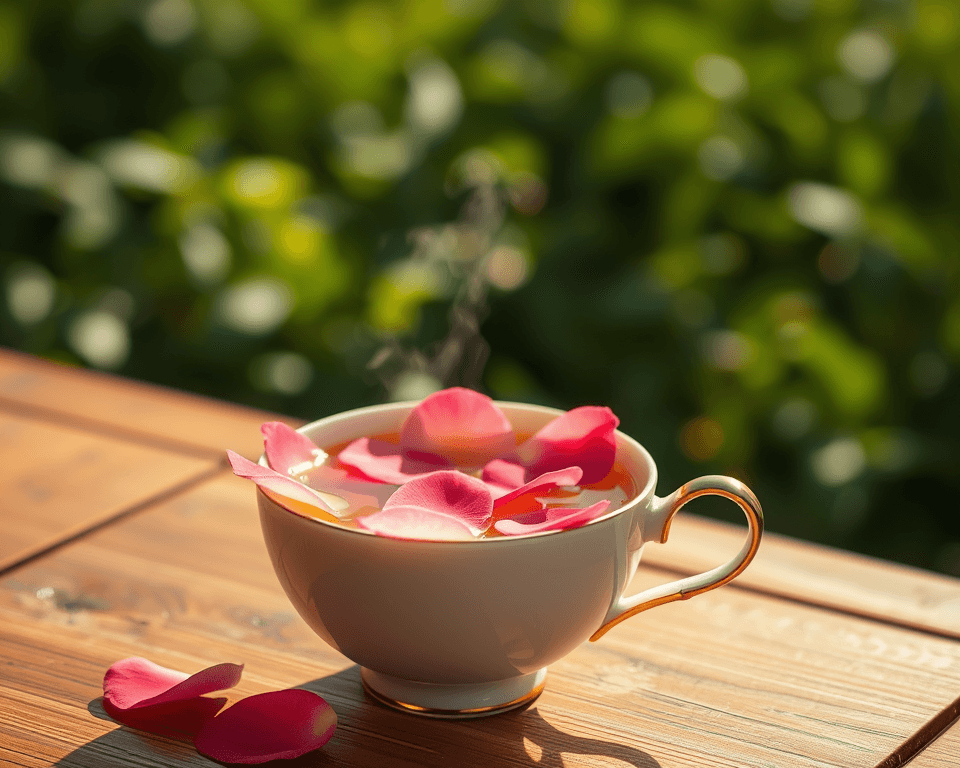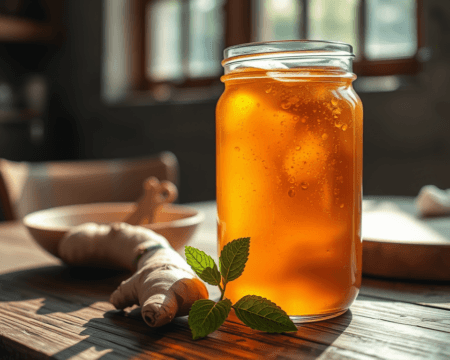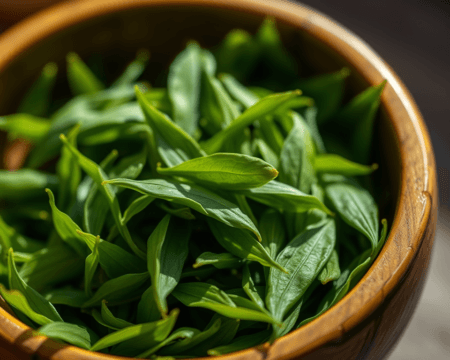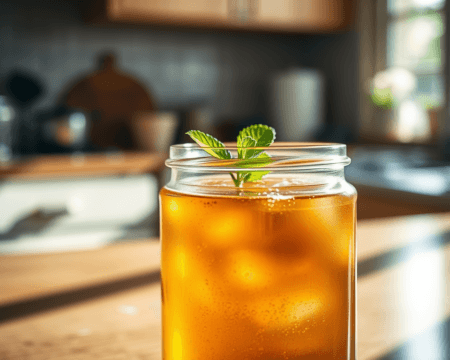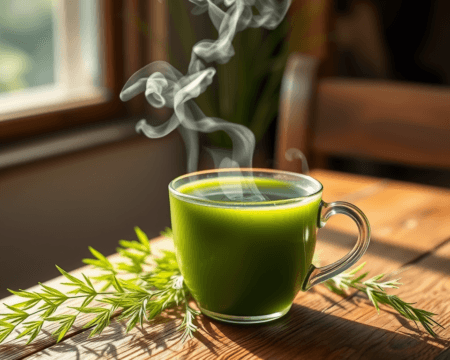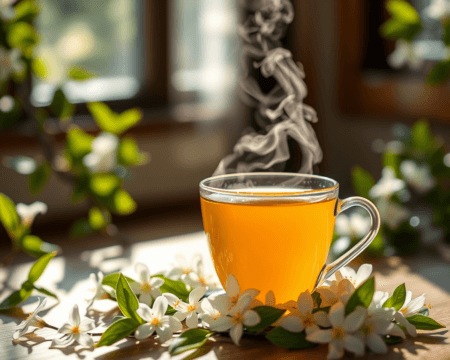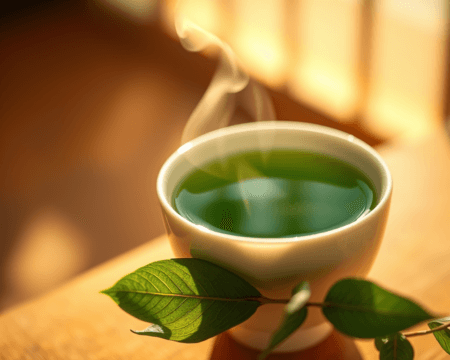When you think of sipping tea, do you picture the comforting warmth, the fragrant notes wafting through the air, and the relaxing moments that follow? Now imagine that tea infused with the delicate sweetness of fresh rose petals. That’s right, rose tea isn’t just for posh tea parties or fancy Instagram photos; it’s a real gem that’s both delicious and beneficial. You’re about to uncover how to master the art of making rose tea with fresh petals, and you’ll have all the tips and tricks to blow away your friends and family.
Key Takeaways:
- Understanding the vast benefits and tastes of rose tea makes every sip worthwhile.
- Sourcing quality rose petals is easier than you think—don’t just settle for anything.
- Follow these step-by-step instructions to brew the perfect cup of rose tea.
- Experiment with variations to keep things fresh and exciting.
- Don’t overlook the rich cultural significance that gives rose tea its character.
Understanding Rose Tea and Its Benefits
What is Rose Tea?
Give me just a second to simplify this—rose tea is an herbal tea brewed with the essence of rose petals. It can be an infusion of dried or fresh petals, and yes, it’s totally different from traditional tea. Typically, it’s caffeine-free, which is a big win for anyone looking to cut back or avoid jitters. The history of rose tea goes back centuries, with many cultures celebrating it as a symbol of love and healing.
Potential Health Benefits of Rose Tea
Now, let’s get into the fun stuff! Rose tea isn’t just a pretty drink; it’s packed with benefits. Think antioxidants—these little superheroes help fight off damage from free radicals. It’s got potential immune support, which means your body’s defense squad might just love you a bit more after a cup. You might also find it aids in digestive health—a gentle hug for your tummy after a heavy meal. More on the health claims later, but trust me, it’s not just a hype.
Sourcing Quality Rose Petals
Where to Buy Fresh Rose Petals
So you’ve decided to make rose tea—where do you score those fresh petals? You can hit up local markets or check out organic flower shops. Specialty shops often stock high-quality buds, and don’t forget to ask about sourcing practices; organic is the way to go here. You want those petals smelling like a garden, not a science experiment.
Growing Your Own Roses for Tea
Got a little green thumb? Growing your own rose petals can be a game-changer. Choose the right varieties—think Damask or Tea Roses, which are known for their sweet fragrances and are totally safe for consumption. Gardening tips? Start with a sunny spot, rich soil, and remember to keep the pests away. Imagine plucking your own fresh petals and brewing a cup of goodness right in your backyard—that’s what life is all about!
Step-by-Step Instructions to Make Rose Tea
Ingredients Needed
Alright, let’s lock and load your ingredients. You’ll need fresh rose petals (about a cup), boiled water (around two cups), and optional extras like honey or lemon to taste. Personally, I love a splash of honey to amplify that floral flavor—just a small tip!
Brewing Process
Time for the magic! The brewing process is straightforward:
1. Boil your water to about 200°F—just before it hits a rolling boil.
2. While it’s heating, gently rinse your rose petals to clean off any dust.
3. Place your petals in a teapot or heat-safe container and pour that hot water over them.
4. Cover it up, and let it steep for about 15 minutes. You want those petals to release their essence.
5. Strain the petals, add your honey or lemon, and voilà! You’ve just brewed fresh rose tea.
Just a head’s up—watch those steeping times! Oversteeping can lead to bitterness. Nobody wants that.
Variations of Rose Tea Recipes
Classic Rose Tea Recipe
Let’s kick things off with the classic. This is the standard you’ll want to master before you get funky with variations. Follow the steps I just laid out, and you’ll have a straightforward rose tea that’s refreshing, floral, and perfectly simple.
Creative Twists on Rose Tea
Now that you’ve got the classic down, let’s play around! Try adding spices like cardamom or ginger for a spicy kick. Ever heard of rose chai? Replace black tea with your rose brew, and mix in spices like cinnamon and cloves; it’s a game changer. Or consider a rose latte—just add steamed milk to your rose tea for an indulgent treat. Get creative and find the combinations that rock your world!
Tips for Enhancing Your Rose Tea Experience
Pairing Rose Tea with Complementary Flavors
Pairing rose tea is about enhancing those floral notes. Think light pastries, like almond croissants or scones with clotted cream—total bliss! For the adventurous, floral pairings with lavender cookies can elevate your tea party to culinary heights. You’ll soon see that the right pairing can transform an ordinary drink into a celebration.
Common Mistakes to Avoid
Ah, mistakes—everyone makes them, but we’re here to avoid a few big ones. First, oversteeping is a biggie. Keep an eye on your timer. Using low-quality petals can also ruin the experience—don’t skimp! And for goodness’ sake, make sure your hydration game is strong. You should be using filtered or spring water; it makes a noticeable difference in flavor.
Cultural Significance of Rose Tea
Rose Tea in Different Traditions
Rose tea isn’t just a drink; it’s a cultural experience! Many traditions embrace it—think Middle Eastern hospitality, where it’s often served in ornate glasses, or in Chinese culture, where it’s a common remedy for skin health. Understanding these rich histories gives your brewing a depth that goes beyond just taste.
The Sensory Experience of Rose Tea
Let’s not forget the sensory aspect. The aroma of fresh rose tea? It’s like walking through a blooming garden on a sunny day. And that beautiful pink hue? A feast for the eyes! When you’re sipping, take a moment to really enjoy the sensory experience—the taste, the smell, even the sound of the tea swirling in your cup. It’s not just a drink; it’s a moment to cherish.
So, there you have it—a comprehensive guide to making the finest rose tea with fresh petals. You’ve got the knowledge to brew an extraordinary cup, appreciate its cultural significance, and enjoy the multifaceted flavors it brings to your palate. Remember, each cup is a mix of art and joy, so get brewing and relish every single sip!
Frequently Asked Questions
What are the health benefits of rose tea?
Rose tea is known for its antioxidant properties, which can help reduce inflammation and support skin health. It may also aid digestion, boost mood, and enhance hydration, making it a refreshing choice for overall wellness.
How can I tell if my rose petals are high quality?
Quality rose petals should be vibrant in color, aromatic, and free from any additives or chemicals. Look for organic or sustainably sourced options, and avoid those that appear wilted or have an off-smell.
Can I use dried rose petals to make rose tea?
Yes, you can use dried rose petals to make rose tea. Ensure they are specifically labeled for culinary use and free from pesticides. Dried petals often provide a concentrated flavor and aroma.
What variations can I try with rose tea?
You can experiment by adding ingredients like lemon, honey, or mint to rose tea. Other delightful options include blending with herbal teas, like chamomile or green tea, for a unique flavor profile.
Is rose tea caffeine-free?
Yes, rose tea is naturally caffeine-free, making it an excellent choice for those looking to avoid caffeine or enjoy a calming beverage any time of day.
How long should I steep rose tea for the best flavor?
For the best flavor, steep rose tea for about 3 to 5 minutes. This allows the rose petals to release their essential oils and flavor without becoming overly bitter.
Can I drink rose tea every day?
Drinking rose tea every day is generally safe for most people. However, moderation is key, especially for those with sensitivities or allergies. Always consult with a healthcare provider if you have concerns.
What makes rose tea culturally significant?
Rose tea holds cultural importance in various traditions around the world, symbolizing love, beauty, and friendship. In some cultures, it is used in rituals and celebrations, enriching its heritage and significance.
Can I make iced rose tea?
Absolutely! To make iced rose tea, brew it hot and then cool it down. Add ice or chill in the refrigerator, and enhance with fresh fruits or herbs for a refreshing summer beverage.




